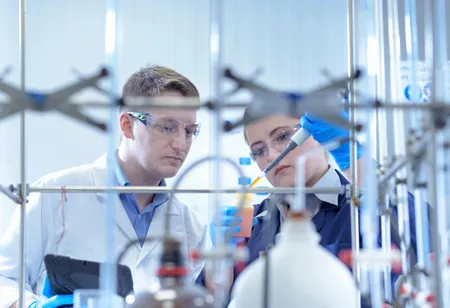Catalysts stand as the driving force behind the chemical industry's progress and innovation.
FREMONT, CA: In the vast and dynamic world of the chemical industry, innovation is the key to unlocking new possibilities and driving progress. Among the critical elements that fuel this innovation are catalysts, the unsung heroes that accelerate chemical reactions and enable the production of vital products that touch every feature of our daily lives. This article delves into the fascinating realm of catalysts and explores how they serve as essential catalysts for change in the chemical industry.
The Role of Catalysts in the Chemical Industry:
Catalysts play a pivotal role in chemical processes by facilitating and enhancing chemical reactions without being consumed. Reducing activation energy increases reaction rates, improving efficiency and cost-effectiveness in various chemical transformations. As a result, catalysts have become indispensable in multiple sectors, ranging from petroleum refining and pharmaceuticals to environmental protection and sustainable energy production.
1. Petrochemical Industry:
In the petrochemical sector, catalysts are the driving force behind transforming crude oil and natural gas into various valuable products. They facilitate the conversion of hydrocarbons into fuels, plastics, and various chemical intermediates. Examples include zeolite catalysts in fluid catalytic cracking (FCC) units that produce gasoline and propylene and reforming catalysts that yield high-octane gasoline.
2. Pharmaceuticals and Fine Chemicals:
Catalysts are crucial in the production of pharmaceuticals and fine chemicals. They enable selective and efficient chemical reactions, leading to higher yields and reducing the need for excessive reagents. Chiral catalysts, for instance, allow the production of single enantiomers in pharmaceuticals, ensuring improved drug efficacy and fewer side effects.
3. Green Chemistry and Environmental Applications:
With a growing emphasis on sustainability, the chemical industry is increasingly adopting green chemistry practices. Catalysts are instrumental in promoting these eco-friendly approaches, enabling processes that consume less energy, generate less waste, and minimize harmful byproducts. Examples include heterogeneous catalysts for catalytic converters, which reduce harmful emissions in automotive exhaust, and photocatalysts for wastewater treatment.
4. Renewable Energy:
Catalysts play a major role in renewable energy production. For example, they facilitate the hydrogenation of biomass-derived feedstocks to produce biofuels and contribute to the advancement of fuel cells, converting hydrogen into electricity efficiently and cleanly.
5. Polymerization:
Polymerization, the process of creating polymers, relies heavily on catalysts. Transition metal catalysts, such as Ziegler-Natta and metallocene catalysts, are instrumental in producing a wide range of polymers with varying properties, leading to innovative materials for numerous applications.
The Future of Catalysts: Advancements and Challenges:
The chemical industry continues to push the boundaries of innovation, and catalyst development is no exception. As new challenges arise, researchers strive to create more selective, efficient, and environmentally friendly catalysts.
1. Nanostructured Catalysts:
Advancements in nanotechnology have led to the development of nanostructured catalysts with enhanced properties. These catalysts offer increased surface area and improved reactivity, paving the way for more efficient chemical transformations.
2. Biocatalysts:
Enzymes and other biocatalysts are gaining traction due to their specificity and environmentally friendly nature. They enable milder reaction conditions and avoid using hazardous chemicals, aligning with the principles of green chemistry.
3. Selectivity and Stereoselectivity:
Developing catalysts that exhibit high selectivity and stereoselectivity remains a challenge. Enhanced catalyst design and understanding reaction mechanisms are crucial in achieving these objectives.
4. Catalyst Recycling and Sustainability:
Efforts to recycle and regenerate catalysts are essential for reducing waste and ensuring a sustainable chemical industry. Continuous research in catalyst recovery techniques and catalytic materials' recyclability is critical for achieving a circular economy approach.
Conclusion:
Catalysts stand as the driving force behind the chemical industry's progress and innovation. From refining fossil fuels to producing pharmaceuticals and exploring sustainable energy sources, these remarkable agents pave the way for diverse and dynamic chemical transformations. As the chemical industry embraces sustainability and green practices, catalyst development will continue to play a pivotal role in shaping a more efficient, environmentally friendly, and prosperous future. By investing in catalyst research and development, the chemical industry is set to open new horizons and achieve extraordinary advancements that benefit society.

